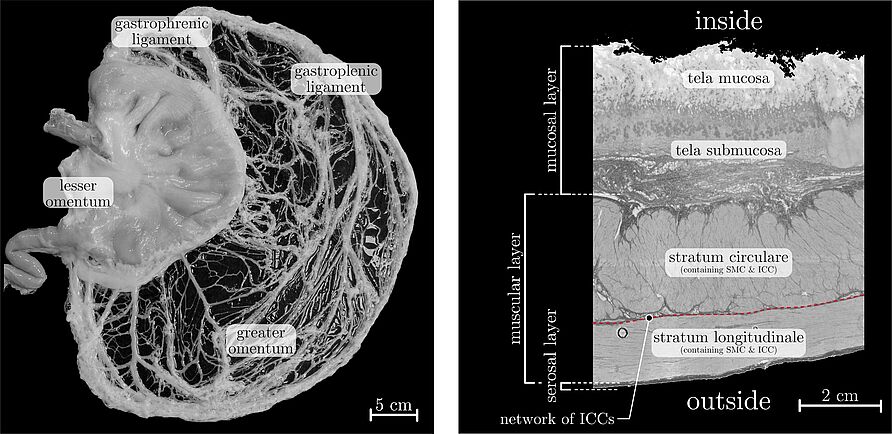The stomach, to be a J-shaped hollow organ, undergoes large deformations during the digestion of a meal. Hereby, different types of contractions across the stomach wall accomplish different tasks, including the storage, mixing, and transport of ingested food, leading to a complex motility pattern. To coordinate the different gastric contractions, specialised pacemaker cells, so-called interstitial cells of Cajal (ICC), generate electrical slow waves. These slow waves propagate in an electrically-coupled network of ICCs and depolarise neighbouring smooth muscle cells. Impaired stomach motility can be caused by a failure of the electrical regulation underlying the activation of gastric smooth muscle contraction, namely gastric dysrhythmias, and can be evoked by any disturbance in the electrical network. Multi-scale models are potential tools to predict gastric motility based on underlying events of ICC network electrophysiology. In the present study, a three-dimensional multi-scale model of the electro-chemomechanical activation of gastric smooth muscle contraction is presented. Additionally, a mechano-electrical feedback mechanism is included. Simulations are performed on a realistic, physiological stomach geometrical model and a postsurgical stomach, studying the effects of a surgical excision on the stomach wall electrophysiology and motility.
L. Klemm, R. Seydewitz, M. Böl
Three-dimensional multi-scale modelling of electro-chemomechanical gastric smooth muscle contraction
Solid (Bio)mechanics: Challenges of the Next Decade, Studies in Mechanobiology, Tissue Engineering and Biomaterials, G. Sommer et al. (eds.): Springer Nature Switzerland, 299-331,(2022) [Link]

